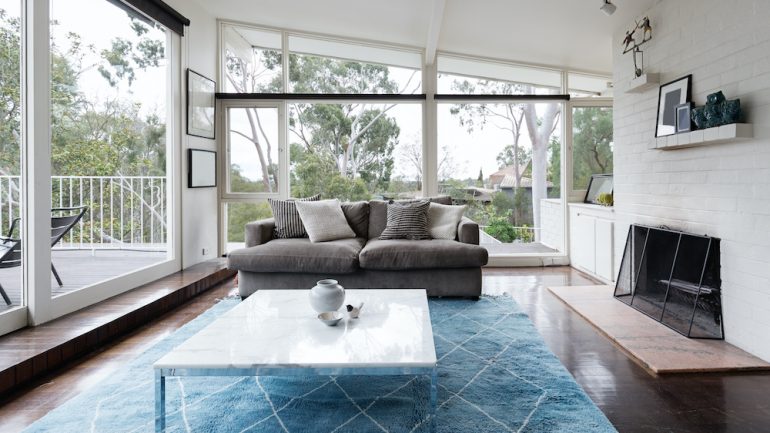Past architectural designs sometimes go through a revival of popularity. In recent years, demand has surged for mid-century modern homes, especially among the millennial generation. Let’s look at this back-to-the-future trend and whether it suits your tastes for nostalgia.
What is mid-century modern?
Mid-century modern homes were built between 1945 and the mid-70s. The style began with the need for practically built and affordable housing for military veterans returning from World War II. In the eastern United States, more traditional styles such as Cape Cod and Colonial Revival caught on in the post-war housing boom. Along the sunny west coast, however, a new style featuring simple, modernist lines and rooms open to one another became the rage.
Typical mid-century modern homes are one story and have gently sloping or flat roofs with extended eaves. Often these roofs will have a long slope on one side of the house. Multiple windows, concentrated on the sides and back of the home, let in lots of natural light. There may be a carport instead of a garage. Prominent fireplaces are a popular design element.
Inside, the living and dining areas are open to one another. This trend toward open-room design began earlier in the century with the decline of household servants but accelerated in popularity with mid-century modern.
Along with mid-century modern homes came mid-century modern furniture. These pieces echo the homes’ architecture with simple, straight lines.
What you need to know
Before buying this style of home, here are some things to consider.
- Since mid-century modern homes were constructed primarily in California, you may have to hunt for these homes in other areas of the country.
- When shopping for an original era mid-century modern home, look for a real estate agent with experience in that style. She will know where to find them in your area. You may find mid-century modern homes concentrated in particular neighborhoods built in that time period.
- Because these mid-century modern homes are older, exercise careful due diligence. Find out when major components such as the roof and HVAC system were last replaced.
- Ask whether the home still has original lead pipe plumbing and asbestos in the insulation, which will need to be replaced. As soon as you put a contract on the home, hire a professional inspector to check it out.
- Some vintage aesthetics such as original tile, counters and cabinets may appeal to you, or you may want to update. Appliances may show their age and need replacement as well.
Old look, new home
If you want the retro look but not the potential costs of repair and remodeling, new home builders around the country can build new homes in the mid-century modern style. Conduct an online search to find local builders that specialize in the style.
Related – Word of Caution: Check Older Homes for Environmental Hazards


